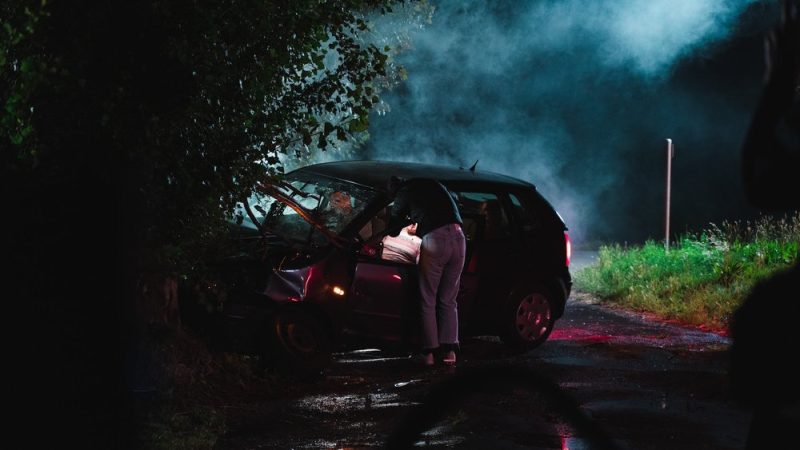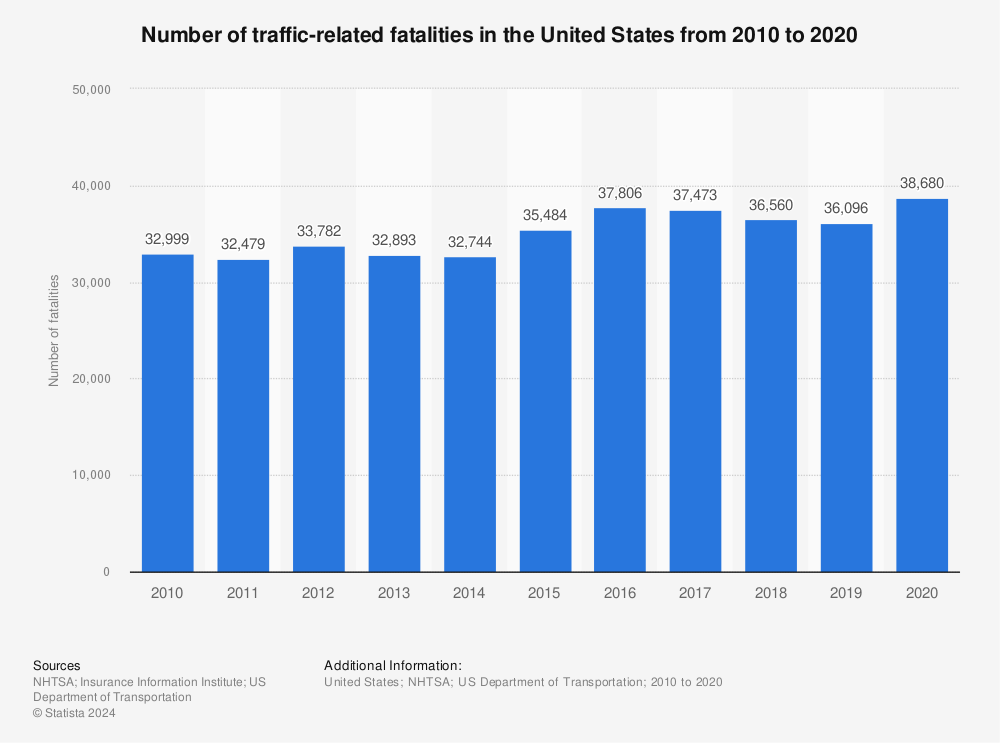Our streets and roadways comprise one of the complex systems that make up our cities. Each of us are invested in and reliant on this system, whether we’re walking or driving or using some other form of transportation: we rely on streets to get us safely to our destination, wherever that may be. Yet, these same streets are some of the most hostile and dangerous places in our built environment.
This article was written by Edward Erfurt and originally published by Strong Towns.
You do not have to be a technical expert to acknowledge that our streets are not safe. There are over 40,000 fatalities on our streets annually, hundreds of thousands more are injured, and each and every one of us are impacted by it. We have become numb to the dangers found at the end of our driveways.
Data collected by the National Highway Transportation Safety Board’s (NHTSB) Fatality Analysis Reporting System (FARS), is both alarming and sad. An optimistic review of the numbers show a gradual increase in fatalities over time, justified by more drivers on the roads. A less optimistic review places roadway fatalities at a 20 year high, including 2020, when we all were staying at home and limiting our trips. But regardless of whether you are a glass-half-full or half-empty type of person, the fact still stands: over 40,000 people die every year on our roadways. This is all occurring at a time where automobile manufactures are using state-of-the-art safety features like airbags and braking systems, and at a time where we are seeing record federal investment into the federal highway system. Despite this, our roads are making people less safe.
This message is being shared in every city hall across North America, and this message is resonating. There is broad consensus that acknowledges that the decisions we are making in the design of our transportation system are killing people. The acknowledgement of this message comes in many forms: Residents complain about speeding on their street and demand traffic calming. Elected officials are receiving complaints or answering questions about yet another crash on a known unsafe street. Technical staff become paralyzed in the mandated design approach. We all become stuck and the cycle of repeating our mistakes continues.
Worse yet, we get stuck in a cycle of blame. The U.S. Department of Transportation National Highway Traffic Safety Administration’s report, Critical Reasons for Crashes Investigated in the National Motor Vehicle Crash Causation Survey, which is often cited by engineers, concludes that 94% of crashes are caused by driver error. This report is a technical brushoff: it shifts the blame away from the actual contributing factors in a crash. But addressing the contributing factors is critical if we are serious about creating safer streets.
No community should have to mourn the loss of another resident on their roadways. Over the past year, Strong Towns has been developing a different approach to how we analyze crashes in our communities, to break these cycles of blame and paralysis. It’s called the Crash Analysis Studio.
This program is about moving beyond the myth of “driver error” and implementing a more humane framework for analyzing car crashes. It’s a repeatable method of analysis that can be adopted by elected officials, technical staff, and concerned citizens in any community—and especially in any community that’s fed up with the status quo.
Strong Towns has hosted 12 Crash Analysis Studio from over 115 nominations from motivated citizens just like you. We then bring together a panel of technical and non-technical experts for a video discussion of the crash, going beyond merely blaming crash victims to instead analyze the multiple contributing factors that caused the crash. Finally, we identify what can be done to reduce the frequency and trauma of future crashes.
You can do this in your community, today, and we’ll show you how. Get started with our free course that teaches you how to conduct your own crash analysis.






